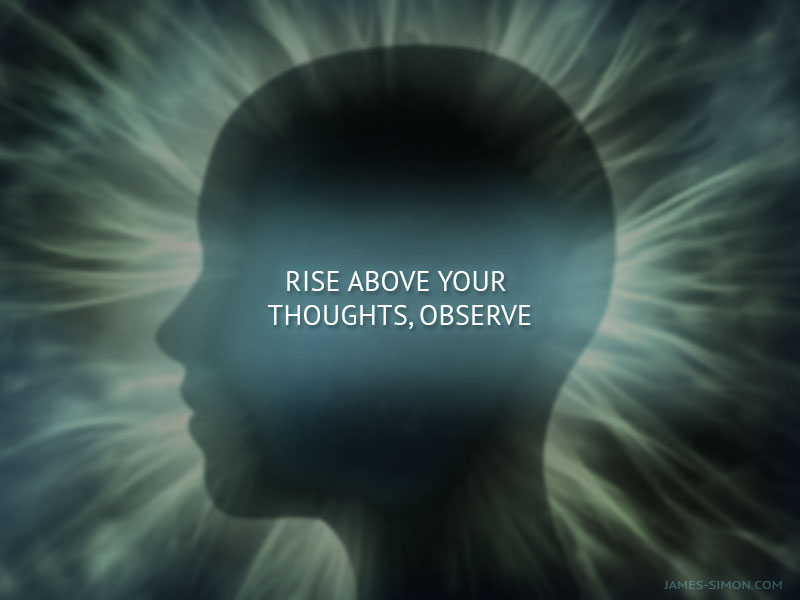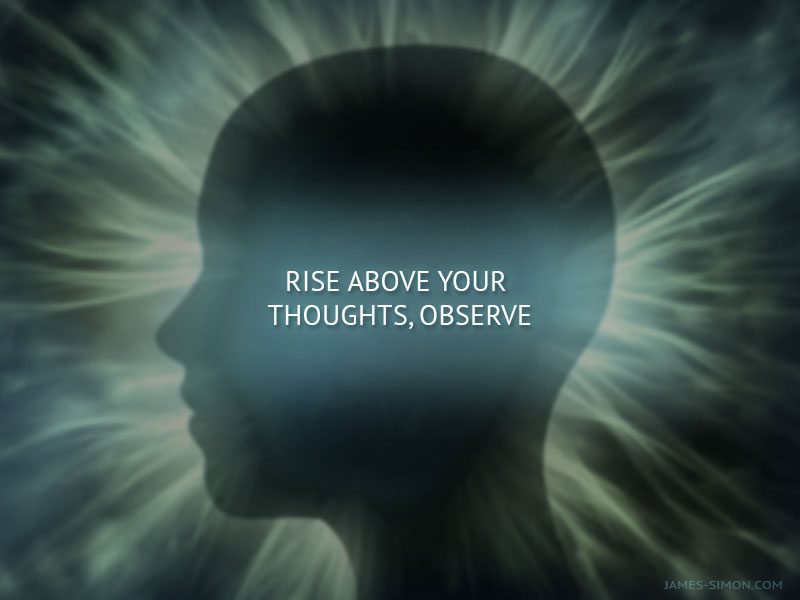What to do when anxious, compulsive thoughts steal your peace and impair your quality of life?
Our mind is always going through pros and cons, brooding over this or that, arguing for and against, comparing and judging.
Can we attain a state that is free from all disturbances and argumentation, a state of tranquillity in which our mind becomes calm and balanced?
Yes, we can!

Step 1 Witness objects moving in the field of mind
Allow the thought patterns to flow without interruption, remain a witness, do not engage, entertain or entangle with the thoughts, watch them flow.
Step 2 Break the habit of the mind
Our mind has a natural tendency to connect the thoughts as they arise, we mostly do that with negative thoughts, a single negative thought leads to another and another and another, soon it becomes a stream of stressful thoughts. It stirs up past memories, awakens negative emotions and before we know it we are in the grip of a thought pattern that leaves us powerless.
Step 3 Meditate for 21 minutes*
Develop a new habit, a habit of letting go of thoughts when they arise. By developing one, single new skill of simply letting the thoughts pass by when they arise you will learn to become a witness to the thoughts.
Sit in meditation and intentionally watch your thoughts moment by moment. Watch every single thought arise and consciously watch that thought drift away.
* one energy cycle is 21 mins; 21 minutes is ideal for establishing a new pattern.
Note: You will slip and have to start over.
This kind of experience is normal; whenever we start anything new, a new practice, habit or routine we slip and have to restart.
The first few times you practice this technique you’ll fail. It’s pretty much guaranteed to happen. The good news is, with a little persistence and commitment it will happen, and you’ll soon start loving it. One of the damaging myth about meditation is the belief that it is difficult and requires lots of practice. It’s not true, meditation is simple, easy and effortless. Drop the effort and it will just happen!
Step 4 Inspect your thoughts
Once you learn to witness the thoughts, the next skill that you will gradually develop through meditation is the ability to inspect your thoughts and decide which are helpful and which are not helpful for your growth.
The ability to inspect thought patterns is the key skill in weakening the deep impressions of unconscious negative thought patterns that normally, invisibly lead to actions that cause failure and suffering in our life.
Step 5 Promote helpful thoughts
Powerful positive thoughts turned into action reinforce new habits of thinking and lead to positive results.
Step 6 Do nothing with that which is not useful
How do you deal with negative thoughts that do not support your growth and wellbeing?
Do nothing with them.
Simply do not engage with them, neither feed them nor push them away. By focusing on helpful thoughts attention and energy are automatically withdrawn from the negative, unhelpful thoughts, they lose power over our emotions and actions and gradually fade away.
Resting on the foundation of the skills of witnessing, inspecting and promoting positive thought patterns is the greatest skill of all –





